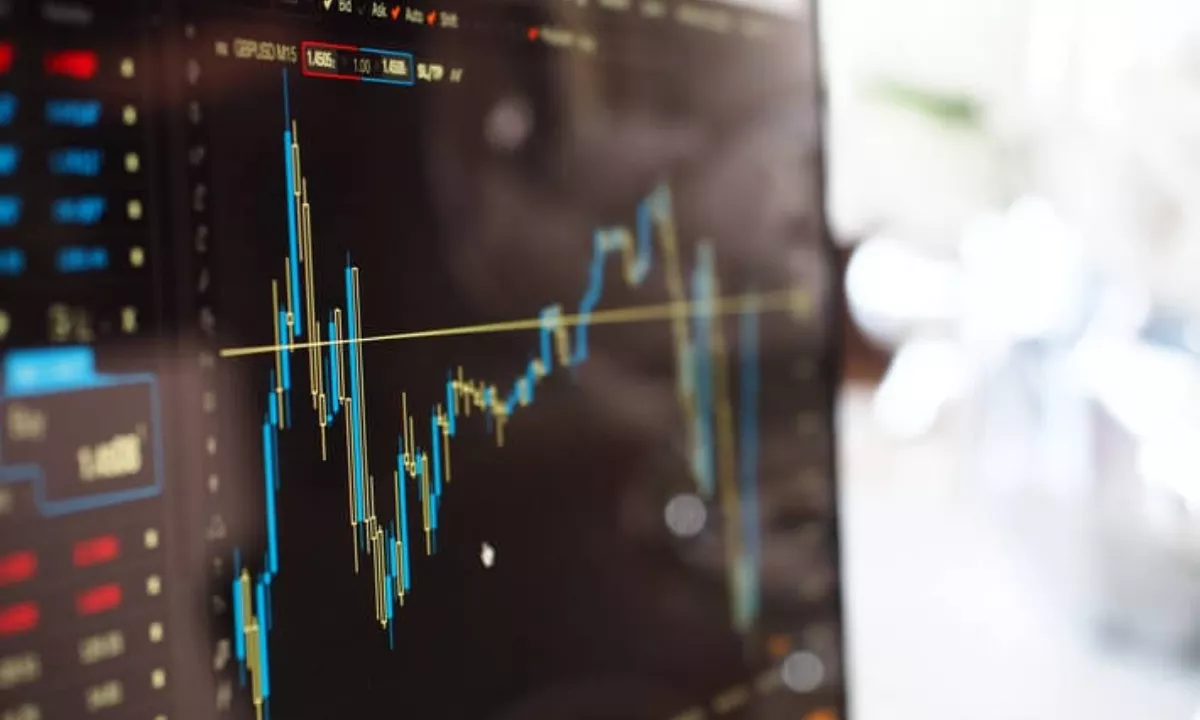Why buy one stock when you can buy them all?
That’s what you get with an ETF or exchange-traded fund. They’re often called index funds – and they’re one of the most commonly heard options for novice investors compared to stocks, and they’re still the best bet compared to buying individual stocks.
New investors, while eager to learn, can easily fall into rookie mistakes like analysis paralysis when trying to weigh the pros and cons of each investment vehicle. At the same time, you may hear conflicting advice about which stocks are too risky and which are “safe things” (though there is no such thing in the stock market).
Of course, being informed is important, but the truth is, today is the best time to start investing. So let’s talk about whether you should invest in stocks or ETFs. Once you break it down, you’ll find that experts recommend ETFs over stocks in almost all cases.
Stocks vs ETFs – What’s the Difference?
Stocks give shareholders a share in a company. They are also called “shares”. The more shares you buy, the more ownership you have in the company. If the company loses, you lose too (because your stock value falls). Many (but not all) companies offer dividends or payments made by the company to shareholders.
“The big difference is that in a stock, you’re buying a company,” said Lori Gross, a financial and investment advisor at Outlook Financial Center. For example, if you own Apple stock, your profit or loss will depend entirely on Apple’s performance. Owning individual stocks is risky because your investments are tied to the future performance of individual companies.
ETFs, on the other hand, contain hundreds or even thousands of stocks from companies in different industries and sectors. “When you buy an ETF, you’re looking at a basket of stocks,” Gross said. For long-term investments, ETFs are generally considered safer investments due to their broad diversification. Diversification protects your portfolio from declines in a single market because your money is spread across hundreds or thousands of stocks.
You can buy ETFs just like stocks. Like stocks, you can buy and sell ETFs throughout the day.
Additionally, most ETFs are passively managed by algorithms that track the underlying index, such as the S&P 500, the overall market, or a specific segment of the market. As a result, the underlying fees for ETFs are much lower than for actively managed accounts.
After all, ETFs try to match an index – not outperform it. While individual stock prices can fluctuate wildly, ETFs are typically less volatile. As a result, ETF returns tend to be less dramatic, but more stable over long periods of time.
When stocks improve
Stocks have the potential to deliver better returns for investors than ETFs – but they rarely do. Unlike ETF investing, buying and selling stocks is an ongoing dance involving a variety of factors, including timing, market sentiment, industry news, environmental and economic factors, all of which affect stock prices.
Not to mention that human emotions can lead to the unpredictability of stocks. Even well-educated financial professionals, who have devoted their lives to choosing the best stocks to invest in, struggle to outperform S&P 500 index funds. According to S&P Dow Jones Indices, which provides data on the S&P 500 and the Dow, actively managed large-cap funds underperformed the S&P 500 nearly 83% of the time, meaning that only 17% of these funds beat the S&P 500 fund. Evidence from Morningstar suggests that actively managed funds are starting to catch up, but the average person may not have the time, expertise and risk tolerance to take the time to keep up with news cycles and trade stocks.
“You risk losing every penny you have,” says Don MacDonald, host of the Talking Real Money Podcast. As a result, some experts have compared personal stock investing to gambling in Las Vegas.
You should feel comfortable and make sure you understand every stock you’re buying, Gross said.
When ETFs are better
For long-term investing, ETFs “are better 100% of the time, as long as you use low-cost, passively managed ETFs that track an index,” MacDonald said. “Anyone with an ETF can eliminate the risk of a total loss.”
That’s not to say that ETFs don’t involve any research at all. You can’t choose which companies are part of an index fund, but you can choose the index fund that best suits your goals. ETFs can be grouped by industry, such as technology or healthcare, company size, or exchange. Socially responsible investors may also appreciate the opportunity to invest in an ESG ETF, a fund of companies committed to improving their environmental, social and/or governance (ESG) performance. There are a variety of funds that track various indices, allowing some level of customization to your portfolio.
NextAdvisor recommends low-cost, broad-market index funds for all types of investors, from beginners to experts. Here are the 10 best ETFs we recommend buying to start building wealth.
Does one have a higher return than the other?
ETFs are designed to match the performance of the index, which means that ETF investors will never outperform the index. On the other hand, individual stocks have the potential to take off and generate inflated returns on your investments.
But again, it’s nearly impossible to predict which stocks will rise over time. In hindsight, it’s easy to figure out which company will be the next Amazon or Apple stock, but only time will tell. There is a saying in finance that past returns are no guarantee of future performance.
Generally speaking, it is difficult to predict how individual stocks will perform in the future. But for most of the last century, the S&P 500 averaged an annualized return of 10%.
For each investment, pay attention to hidden fees and calculate expense ratios. Make sure they’re low — below 1% — so they don’t hurt your returns.
Diversified and mixed stocks and ETFs
An emerging school of thought believes that people should diversify by investing in passive investment vehicles such as ETFs and actively managed securities such as stocks.
If you’re willing to take the time to research and understand individual stocks, you can make the right investment decisions based on your specific risk tolerance and timeline.
If you’re not sure where to start, choosing an index fund or ETF is a great place to start a long-term retirement plan, suggests MacDonald.
You can then mix stocks that you find attractive while learning more about how much risk you’re willing to take. Experts advise that stocks shouldn’t make up the bulk of your portfolio.
“It’s hard to invest if you don’t know what the end result is,” Gross said. Clarity is essential when planning your financial future.
Start investing today
Getting started early and investing often is the secret to a healthy retirement account. Plus, the power of compound interest — which can be a huge boost if you’re investing long-term — allows your money to work for you, so it grows without you putting in extra effort.
First, you need to open an investment account. If you want to choose your own investments (including individual stocks), check out NextAdvisor’s list of the best online brokers, or check out NextAdvisor’s list of the top 10 ETFs.
If you want something more automated, consider a robo-advisor who can ask you a few questions and choose investments for you based on your risk tolerance and investment timeline.
Finally, be sure to add more money on a regular basis, whether it’s per paycheck or whenever it’s good for your schedule. This strategy, known as dollar cost averaging, can help you take advantage of the market’s upside — without the pressure of trying to time it — while offsetting or “mediating” down.
With continuity, time to market, and sound investment decisions, you can prepare yourself for retirement when you’re ready to enjoy financial independence.
यह भी देखें!
- अमेरिकन एक्सप्रेस सेंचुरियन ब्लैक कार्ड समीक्षा
- X1 क्रेडिट कार्ड - आवेदन करने का तरीका जांचें।
- डेस्टिनी क्रेडिट कार्ड - ऑनलाइन ऑर्डर कैसे करें।
- डेल्टा स्काईमाइल्स® रिजर्व अमेरिकन एक्सप्रेस कार्ड समीक्षा - और देखें।
- अमेरिकन एक्सप्रेस नए चेकिंग खाते और पुन: डिज़ाइन किए गए एप्लिकेशन के साथ ग्राहक अनुभव पर ध्यान केंद्रित करता है


